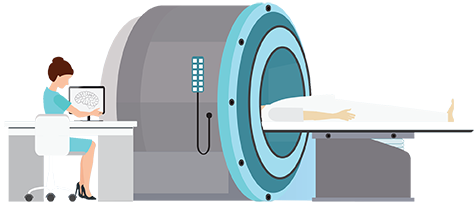

Obstetric Ultrasound is the use of ultrasound scans in pregnancy. Ultrasound and ultrasonography was introduced in the late 1950’s and has become a very useful diagnostic tool in obstetrics.
Currently used equipment, known as real time scanners, take continuous pictures of the moving fetus which can be depicted on a monitor. They are emitted from a transducer placed in contact with the maternal abdomen and moved around to look at any content within the uterus. Repetitive arrays of ultrasound beams scan the fetus in thin slices and are reflected back onto the same transducer. The information is recomposed back into a picture on the monitor screen ( a sonogram, or ultrasonogram). Movements like fetal heart beat and malformations in the fetus can be assessed accurately on the screen. These measurements form the cornerstone in the assessment of gestational age, size and growth in the fetus. A full bladder is often required for the procedure when abdominal scanning is done in early pregnancy. There is no sensation at all from the ultrasound waves.
Ultrasound is safe, noninvasive, accurate and cost effective. It plays an important role in the case of every pregnant woman. The main uses of ultrasonography are to diagnose and confirm early pregnancy or vaginal bleeding in early pregnancy. In the presence of first trimester bleeding, ultrasonography is also indispensable in the early diagnosis of ectopic pregnancies and molar pregnancies. Determination of gestational age and assessment of fetal size is important. Fetal measurements tell the age of the fetus. In patients with uncertain last menstrual periods, measurements must be made as early as possible to arrive at a correct dating for the patient.
Measurements are usually made of the crown-rump length and the bi parietal diameter. The bi parietal diameter is the diameter between the two sides of the head. Babies of the same weight can have different head size. Dating using the BPD should be done early. The abdominal circumference is the single most important measurement to make in late pregnancy. It tells of fetal size and weight. Serial measurements are useful in monitoring growth of the fetus.
Diagnosis of fetal malformation is important because the risk of having a baby with chromosonal abnormality increases with the mothers age. Abnormalities can be diagnosed by an ultrasound scan. Common abnormalities can be spina bifida, cleft lips/ palate, congenital cardiac abnormalities and many more. First trimester ultrasonic soft markers are now in common use to enable detection of Down Syndrome fetuses. Ultrasound can also be used in other diagnostic procedures, which are many.
Ultrasonography has become very imporant in localization of the site of the placenta and determining its lower edges, thus making a diagnosis of placenta previa. Other placental abnormalities can also be assessed. In the situation of multiple pregnancies, ultrasonography is invaluable in knowing the number of fetuses, like twins. Hydramnios and oligohydramnios, excessive or decreased amniotic fluid can be clearly depicted by ultrasound. Both conditions can have adverse effects on the fetus.
Other areas of interest are confirmation of intrauterine death, confirmation of fetal presentation in uncertain cases. Also evaluating fetal movements, tone and breathing in the biophysical profile.
I’ve tried to provide a bit more detail in this post about obstetric sonography and its role in monitoring pregnancy. Obstetric ultrasound scans have become a vitally important part of being pregnant and taking good care of yourself and your baby. There’s a lot more to it than waving a wand around a pregnant belly and determining the sex of the fetus, like we tend to see on television. If you think you have what it takes to become an obstetric sonographer, start by getting information directly from ultrasonography schools.